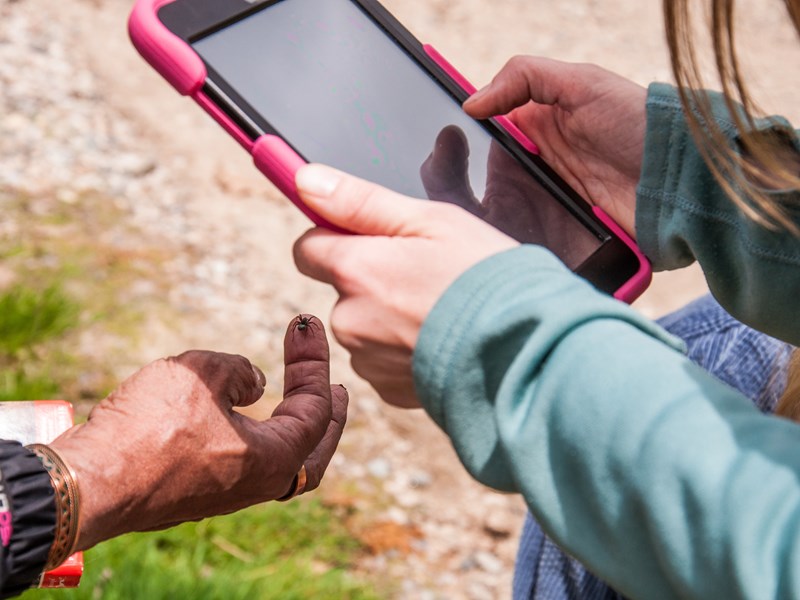Contributing to your community and to science
16 August 2024

Citizen science projects have become a popular and incredibly useful way for a whole range of people to contribute to their community and to science.
Citizen science projects are an important part of understanding species survival and have become a popular and incredibly useful way for a whole range of people to contribute to their community and to science.
These projects also raise some interesting questions about science and who it belongs to. Does a lab coat give us permission to be a scientist, or is it a degree hanging on the wall? Science is often thought of as objective, analytical, and at times separate from our everyday lives – a task carried out in the corners of a lab, not a suburban backyard or on a mobile phone.
Scientists are looking to their communities to actively participate in science instead of watching from the sidelines. This participation in science projects, commonly referred to as “citizen science”, is challenging the idea that science belongs to certain groups of people and not others. Therefore, anyone can have an active role in contributing to science.
Science is both a body of knowledge and the process of building knowledge by asking questions and experimenting to find the answers. Professional scientists have usually been at the center of generating evidence that informs decision making which shapes our society, however, science has a much longer history of community involvement. Since the early 1900s, the public has been called on to gather everything from weather data to bird sightings. Even earlier, First Nations peoples constructed a deep understanding of the natural world through scientific inquiry, data gathering, and knowledge sharing over many thousands of years. Citizen science draws on the knowledge and observations of the community to help gather data that might otherwise be missed.
Democratising science
Participation in things like citizen science projects can lead to more equal sharing of the process and knowledge that comes from it, which is what ‘democratising science’ is all about – but how do we achieve it? There will always be a need for the professional expertise that scientists bring, however, citizen science projects that actively involve the public are an important step in bridging the divide between science and society. Don’t be fooled though that they only exist to provide free labour. Citizen science projects generate real data that benefits scientists and the community.
Citizen science allows people to become active and informed citizens through projects that have real science outcomes. Great projects have benefits for everyone:
| For the professional scientist |
|
| For the citizen scientist |
|
Citizen science projects
When it comes to citizen science, Victoria has a range of ways people of all ages can become involved. Some of the projects below only operate during certain periods of the year (aligning with seasons, hibernation etc), so check when your chosen citizen science project is live if you’d like to participate, but you can always see what data has been collected in previous years.
The Seal Spotter Project is one example of how Victorian’s can contribute to scientific research, and one avenue for democratising science.
Moth Tracker is another citizen science project where you can contribute to scientific research. If you see an Endangered Bogong Moth, all you need to do is photograph the moth and upload it to Zoos Victoria’s moth tracker webpage. Your sightings are shared with experts to aid research and conservation efforts for the moths and the critically endangered Mountain Pigmy-possum.
For other examples of citizen science projects for yourself or your class, or would like to know more you can visit the following websites:
- Environment Protection Authority Victoria
- Parks Victoria
- Inspiring Australia, Victoria
- Australian Citizens Science Association
- CSIRO
Connecting to the classroom
For many science teachers, citizen science may be a natural fit, connecting to curriculum outcomes such Science inquiry skills, analysing and evaluating, and science understanding, specifically science as a human endeavour.
For civics and citizenship teachers the connections to the curriculum may seem a little harder to make, especially in the levels where ‘active citizenship’ is less evident. But citizen science projects can be used to address a range of outcomes, including:
- Levels 3&4, the role of local government and services provided, how decisions are made democratically in communities, how and why people participate in their communities, and to explore the idea of democratic values
- Levels 5&6, how laws are initiated and passed through parliament (i.e. potentially providing evidence to support new laws or amendments to laws), the responsibilities of the different levels of government and how they interact and the concept of global citizenship
The curriculum for Levels 7 to 10, has a much greater emphasis on participating in democracy and active citizenship, and the concept of citizen science can even be used to explore other concepts such as identity and diversity, how groups choose to express their identity, and how and why some groups participate in civic life in particular ways.
While exploring citizen science projects can be a stand-alone classroom activity, if you are looking at a deeper-dive into the connections between civics and science, our teacher guide Action and Influence can support this and help students potentially plan their own citizen science project.